
Paro
Paro is a valley town in Bhutan, west of the capital, Thimphu. It is the site of the country’s only international airport and is also known for the many sacred sites in the area. Paro valley extends from the confluence of the Paro Chhu and the Wang Chhu rivers at Chuzom upto Mt. Jomolhari at the Tibetan border to the North.
Paro Airport has been described as “the most difficult commercial airport in the world”. The airport has only one runway.
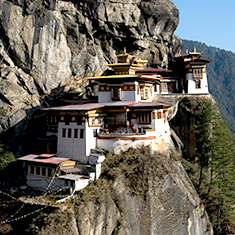
Taktsang Monastry
Taktsang Monastry is Bhutan’s most iconic landmark and religious site. The name Taktsang translates to “The Tiger’s Nest”. This temple is one of the most holy sites in the kingdom and clings impossibly to a sheer cliff face 900 hundred meters above the Paro Valley.
It is said that Guru Rinpoche arrived here on the back of a tigress and meditated at this monastery and hence it is called ‘Tiger’s Nest’. The site has been recognized as a most sacred place and visited by Shabdrung Ngawang Namgyal in 1646 and now visited by all Bhutanese at least once in their lifetime.
Taktsang Monastry is located approximately 10 km north of Paro town at an altitude of 3.120 meters. In order to arrive at the temple visitors must trek for around 2-3 hours through beautiful, shady pine forests. No trip to Bhutan would be complete without a visit to this remarkable heritage site.
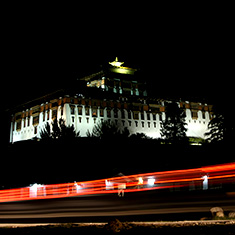
Rinpung Dzong
In the 15th century local people offered the crag of Hungrel at Paro to Lama Drung Drung Gyal, a descendant of Pajo Drugom Zhigpo. Drung Drung Gyal built a small temple there and later a five storied Dzong or fortress which was known as Hungrel Dzong.
In the 17th century, his descendants, the lords of Hungrel, offered this fortress to the Drukpa hierarch, Ngawang Namgyal, the Zhabdrung Rinpoche, in recognition of his religious and temporal authority. In 1644 the Zhabdrung dismantled the existing dzong and laid the foundations of a new dzong.2 In 1646 the dzong was reconsecrated and established as the administrative and monastic centre of the western region and it became known as “Rinpung Dzong”.
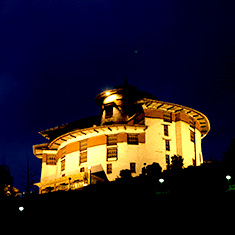
Ta Dzong (National Muesum)
Established in 1968, in the renovated ancient Ta-dzong building, above Rinpung Dzong under the command of His Majesty, the King Jigme Dorji Wangchuck, the third hereditary Monarch of Bhutan. The necessary infrastructure was created to house some of the finest specimens of Bhutanese art, including masterpieces of bronze statues and paintings. Suitable galleries were constructed to house the extensive collections. Works of art were elegantly displayed on scientific lines.
Today the National Museum has in its possession over 3,000 works of Bhutanese art, covering more than 1,500 years of Bhutan’s cultural heritage. Its rich holdings of various creative traditions and disciplines, represent a remarkable blend of the past with the present and is a major attraction for local and foreign visitors.
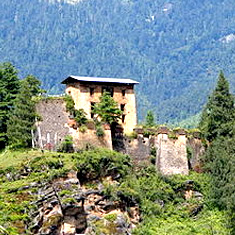
Drukgyel Dzong
The ancient ruin of Drukgyel Dzong, considered as the most beautiful and famous archaeological sites in Bhutan, is situated on a ridge in the upper Paro valley. Since its construction in 1649, Drukgyel Dzong had been served as an important base for defense in the region until 1951 when it was destroyed by fire. Even after the destruction, the ruins of the Dzong continued to be protected as an important monument linking people of Bhutan with the great events that contributed in maintaining sovereignty of the country.
History has it that Zhabdrung Ngawang Namgyel built the dzong to commemorate his victory over the Tibetan-Mongol forces in 1649. However, some people say it might have been built by Tenzin Drukdra, the second Desi at the behest of Zhabdrung.
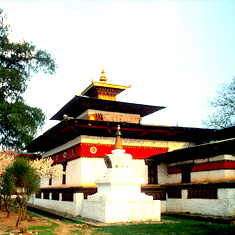
Kyichu Lhakhang
Paro Kyichu is considered one of the oldest temples in Himalayan Buddhism. Said to be one of the temples ‘beyond the border’ (yang ‘dul) built by the Tibetan King Songtsan Gampo (late 6th-early 7th century) to pin down a demoness envisioned on the landscape, Kyichu pins down her left foot.
Additional buildings and a golden roof were constructed in 1839 by the penlop (governor) of Paro and the 25th Je Khenpo. Elderly pilgrims constantly walk around the temple spinning its many prayer wheels.


